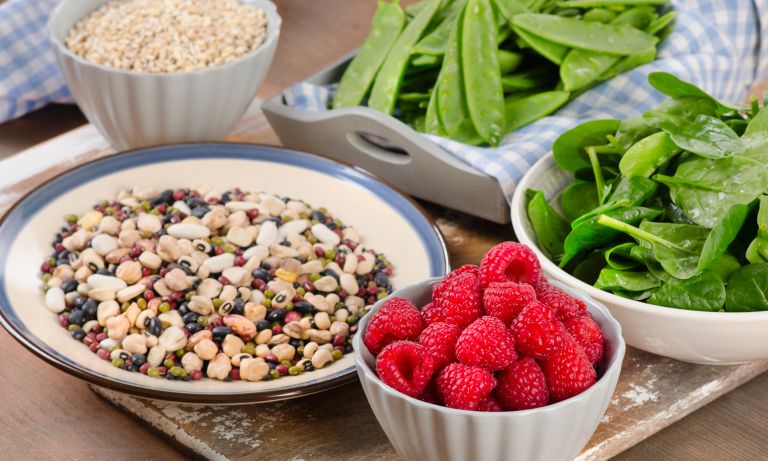Fiber is one of the components that provide the proper functioning of our body. High fiber foods prevent bowel disease, cardiovascular disease, and even diabetes. Nutritionists insist that if you want to have a slim and healthy body, then fiber should enter your body in sufficient quantities.
Fiber is a gross component that, passing through the digestive system, collects all undigested products, carcinogens, and removes them from the body in a natural way. In this way, fiber cleanses your body and it works better. Fiber is mainly found in plant foods and is divided into two types: soluble and insoluble.

Insoluble fiber is found in foods such as vegetables, wheat, and whole-grain flour. It does not dissolve in water and transports processed products from our bodies.
By consuming fruits, nuts, and oatmeal, you provide your body with soluble fiber.
Typically, most plant foods contain both types of fiber. You should remember that there is not a fiber in such foods like white rice, white flour, and sugar. So try to use organic foods.
If you are used to eating protein foods mostly, then start adding fiber gradually. According to doctors, the daily fiber for an adult is from 20 to 40 grams.
Choose foods with a high level of fiber and add to your daily diet. At the same time, monitor your feelings. You need to know how your body reacts to every product. Over time, you will understand which product is right for you, and which of them brings discomfort.
Whole grains.
It is a good source of fiber. Use them for breakfast or as a side dish for meat and vegetables. When buying products, replace white rice with unprocessed, choose pasta from whole grain flour, replace cereal with oatmeal from whole grain. Bran is a good option to saturate your body with fiber. Add a tablespoon of bran to your porridge to meet your daily fiber requirement.
Right bread.
Eat whole-grain bread. You can add a little bran into the dough. Therefore, your bread will contain more fiber. You can use whole grain flour for muffins, pancakes, and other types of baking. Nevertheless, note that whole grain flour is heavier than white, so when baking, increase the dose of yeast or baking powder.
Flaxseeds.
These seeds are just a storehouse of nutrients and fiber. They can be added to baking or 1 tablespoon of seeds pour with boiled water. When the liquid has cooled, drink water, and eat the seeds. Such a procedure you have better do in the morning on an empty stomach. Flax flour can be added to vegetable smoothies or mixed with yogurt.
Vegetables and fruits.
Vegetables should be present at every meal. Moreover, their number should be half of your plate. Not all people can digest raw vegetables, so give preference to cooked vegetables, and raw ones are consumed in small quantities and combine them with cooked food. Therefore, they digest better and give all their nutrients.
You can use vegetables to cook soups, puree, or salads.
Fruits and berries can be a tasty snack. On average, the daily norm of fruit berries should be 400 grams. You can make mashed, jelly, or fructify salads with yogurt from them. Try not to add sugar to them if you want your snack to be healthy.
Beans, peas, or lentils not only saturate you for a long time but also give you a huge amount of fiber. Add them to soups or cook as for puree, but soak them in water for 3-4 hours before cooking. Do not eat legumes every day, 2 times a week is enough.
All these products are tasty and healthy. Try to consume all of them. Our body loves when we eat diverse food. Nevertheless, if you do not like some of these products, do not force yourself to consume them. Listen to your body; it knows what suits it better.
Comments are closed, but trackbacks and pingbacks are open.